Seeds
Discover the stories and powers of the Amazon seeds that bring our handcrafted creations to life.
The King of the Amazon
El Açaí
Açaí, the fruit of the açaí palm, is a true Brazilian treasure. It comes from the vast Amazon rainforest, specifically from the Pará and Amazonas regions in northern Brazil. This fruit is mainly made up of seeds, with only about 10% pulp. Its name comes from the Tupi language, “yá-aí,” meaning “fruit that cries.”

Sustainability and local cultivation
Each year, Brazil produces around 1 million tonnes of açaí seeds. Since the seeds represent 85% of the fruit, they become a by-product. In the state of Pará, where approximately 98% of Brazilian açaí is grown, this by-product has become a serious environmental issue. The seeds were often discarded in abandoned areas, occupying hectares of land and becoming breeding grounds for disease.
By using açaí seeds as a natural element to create eco-jewellery, we not only help to address a pressing environmental problem, but also promote a sustainable solution. It is estimated that around 16 tonnes of seeds are discarded into the environment every day, highlighting the urgency of finding actions—such as seed reuse—to reverse or reduce the impact of this situation.
The sacred powers of the Açaí seed
Brazilian Indigenous peoples attribute great spiritual and magical importance to the açaí seed. It is seen as a symbol of vitality and energy. The seeds are believed to hold healing powers, spiritual protection, and strength.
Some Indigenous communities use the seeds in rituals, grinding them and mixing them with other medicinal plants to create potions or amulets. They believe these preparations can ward off illness, negative energies, and harmful forces, while promoting health and well-being.
Açaí seeds are also frequently used in shamanic ceremonies and rituals of communion with the guardians of the forest. It is believed that the seeds can facilitate communication with sacred and ancestral beings, offering guidance and protection to the community.


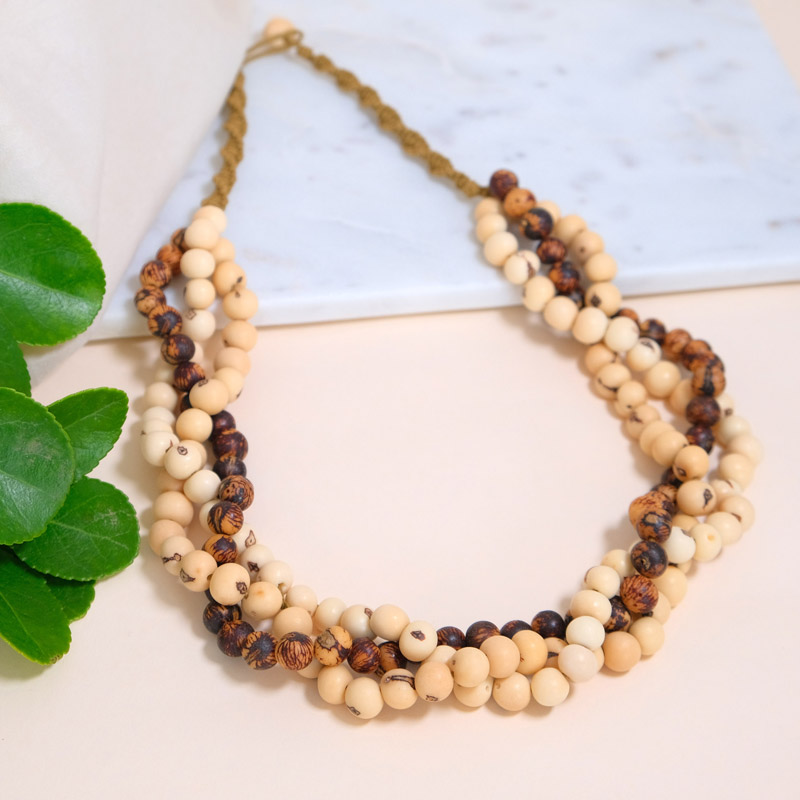

Jaboncillo
The Jaboncillo is a tree native to Brazil that grows across various biomes of the Amazon. Reaching up to 17 metres in height, it is known for its fruits, which contain natural detergent properties and are used in soap production and traditional medicine. Indigenous communities of the Amazon regard this tree as a symbol of connection to the Earth, using its seeds for hygiene and ritual purposes. Its preservation is vital for both biodiversity and Indigenous culture.
Ancestral treasure of purification and spiritual connection
The Jaboncillo is a symbol of spiritual purification, a sacred link between the physical and spiritual worlds, rooted in ancestral traditions and the wisdom of nature. For the Indigenous peoples of Brazil, this seed holds the power to ward off negative energies, protect against evil spirits, and foster a deep connection with nature and their ancestors.
Jaboncillo is used in rites of passage and initiation rituals, where its essence symbolises renewal and spiritual preparation for life’s challenges.

Coco Tucum
The tucum palm is native to South America, especially Brazil, and is known for its spines, which Indigenous peoples have traditionally used for sewing. Its ripe fruits—small, round berries—are rich in oil and used in both cooking and cosmetics. This tree plays a vital role in tropical ecosystems, providing food for animals and protecting itself from herbivores with its sharp spines. However, deforestation poses a serious threat, making its conservation essential for preserving regional biodiversity.
Tucum: the power offertility
Tucum palm seeds are revered by various Indigenous Brazilian ethnic groups as bearers of magical powers that promote fertility, abundance, and renewal.
Used for centuries in rituals and spiritual practices by communities such as the Yanomami, Tikuna, and Kayapó, among others, these seeds hold a sacred role—especially for couples wishing to conceive children. These groups use amulets and talismans made from the seeds as essential elements of ceremonies that celebrate life, fertility, and the continuation of the lineage, trusting in the wisdom passed down from their ancestors.
Thus, the tradition of the tucum seed as a symbol of fertility and renewal extends across several Indigenous cultures, enriching their spiritual practices and strengthening their bonds with the earth and their own ethnic identities.


Coco Guariroba

The guariroba is a palm native to Brazil’s cerrado that can grow up to 20 metres tall. Its trunk is used in construction, and its leaves serve as fodder for animals and as materials for housing. Its fruits contain a nut prized in local gastronomy and in the food and cosmetics industries. The guariroba’s main product is its heart of palm, widely used in the traditional cuisine of Goiás and Minas Gerais.
This resilient plant plays an important role in regenerating degraded areas. Its seeds hold both cultural and economic value, making them highly appreciated for artisanal creations.
A Portal to the spiritual world
Indigenous peoples regard the Guariroba seed as a portal to a transcendent plane. In sacred ceremonies and rituals, its presence is essential, symbolising the connection between the earthly and the divine. Shamans and spiritual leaders use it to seek guidance, protect their communities, and perform healing rituals rooted in the belief in divine intercession.
These hidden powers represent the link between the physical and spiritual realms, where the seed is seen as a medium for communicating with the divine and channelling sacred energies for healing and spiritual elevation.


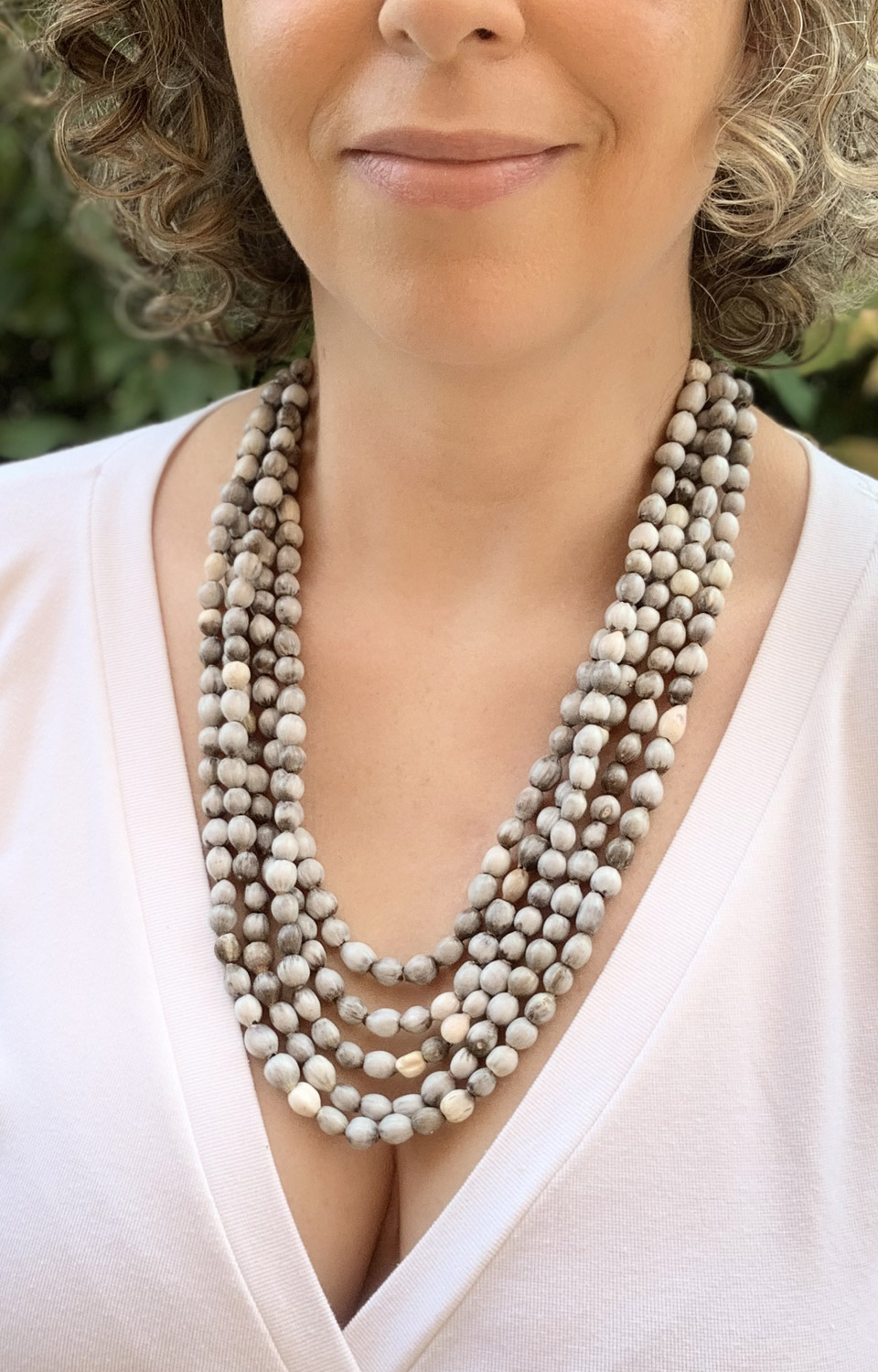
Job’s Tears
This plant, introduced to Brazil, is known for its ability to adapt to various climates. It is mainly cultivated by Indigenous and rural communities and has been valued since ancient times for its medicinal and nutritional properties. For centuries, its seeds have been used in culinary and artisanal traditions—including in beer production in India for over 3,000 years.
Highly prized for their beauty, durability and lightness, Job’s Tears seeds become unique pieces when transformed into sustainable eco-jewellery. Their use promotes ecosystem preservation and traditional farming practices, while also providing economic support to local communities—strengthening the connection between culture, sustainability and craftsmanship.
Lucky Amulet: the Protective power of Job’s Tears
In the traditions of Amazonian Indigenous peoples, the Job’s Tears seed is revered for its spiritual power to protect against envy and the evil eye, while also attracting luck and prosperity.
Wearing one of these seeds is considered a powerful amulet for protection and good fortune, capable of repelling negative energy and drawing in positive influences. For many Indigenous people, the presence of Job’s Tears in their lives represents not only a symbol of protection, but also a source of hope and abundance.

Tagua (Jarina)
Tagua, also known as Jarina, is a palm native to the tropical forests of South America. Its seeds, with unique patterns and natural colours, are valued for their beauty and versatility. Used as a sustainable alternative to animal ivory, Tagua does not harm wild animal populations. Its environmentally respectful harvesting has been practiced for generations. Known as “vegetable ivory,” Tagua holds both cultural and economic importance, being essential for the sustainability of Amazonian ecosystems and the wellbeing of local communities.
An inspiring symbol of strength and resilience
The Tagua seed, like most seeds, not only protects against negative energies and evil spirits but also holds powerful symbolism among Amazonian indigenous peoples, representing a story of strength and resilience.
Regarded as a plant that thrives in challenging jungle environments, Tagua embodies the ability to overcome life’s hardships. For these communities, Tagua is an inspiring symbol of perseverance, reminding them of the importance of facing obstacles with courage and determination, and finding strength through connection with nature.


Jupati
This palm, also known as “rapia,” is native to the Amazon region and is characterised by its large, fan-shaped leaves that rise majestically in the tropical forest. The Jupati seed is unique in many ways and has become an integral part of the culture and daily life of Amazonian indigenous communities, especially among riverside populations who use it to craft various everyday items.
An interesting fact about the Jupati seed is that it is known as one of the largest seeds in the world. These seeds can reach impressive sizes, often exceeding 5 centimetres in length and 3 centimetres in width.
Indigenous and local communities that rely on Jupati seeds usually practice careful, controlled harvesting. This involves collecting mature seeds without harming the parent plant. The seeds are selectively gathered, allowing the plant to continue growing and producing seeds in future seasons.
Guardians of purity: the protection and purification of the Jupati seed
For the Tikuna indigenous peoples of the Amazon, the Jupati seed is a powerful symbol of purification and protection. In their cultural practices and rituals, the seed is revered for its ability to ward off illnesses and spiritual harm.
The Tikuna use it in healing ceremonies, believing its vital energy can purify both body and soul, restoring balance and harmony with the spiritual world. Additionally, the Jupati seed is used to craft amulets and sacred artifacts, strengthening the Tikuna’s connection to their ancestral traditions and enhancing spiritual protection in their daily lives.


Ox Eye

This plant, belonging to the Fabaceae family and native to tropical America—especially common in Brazil—is known for its fascinating seeds with varied colours, ranging from dark brown to reddish tones.
Beyond their beauty, Ox Eye plays a crucial role in the ecosystem. Its roots fix nitrogen in the soil, improving fertility and benefiting surrounding plants. A symbol of the connection between nature and sustainability, its seeds become unique and meaningful pieces when transformed into eco-jewellery.
The transformative power of the Ox Eye seed: spiritual and emotional balance
In the rich tradition of Amazonian indigenous communities, the Ox Eye seed is revered for its transformative power in spiritual and emotional balance, being considered a powerful catalyst for such harmony. It is believed that its presence in ritual practices wards off negative influences and also awakens a profound inner transformation. When coming into contact with the seed during sacred ceremonies, individuals are invited to immerse themselves in a process of self-discovery and spiritual healing.
This transformation is characterised by a reconnection with ancestral roots, a deeper understanding of the interconnectedness of all beings, and a sense of inner peace. The Ox Eye seed acts as a spiritual guide, helping individuals face emotional challenges, overcome trauma, and find a state of balance and fulfilment. This inner journey is essential for mental and emotional health, strengthening people to face life’s challenges with wisdom, compassion, and resilience.



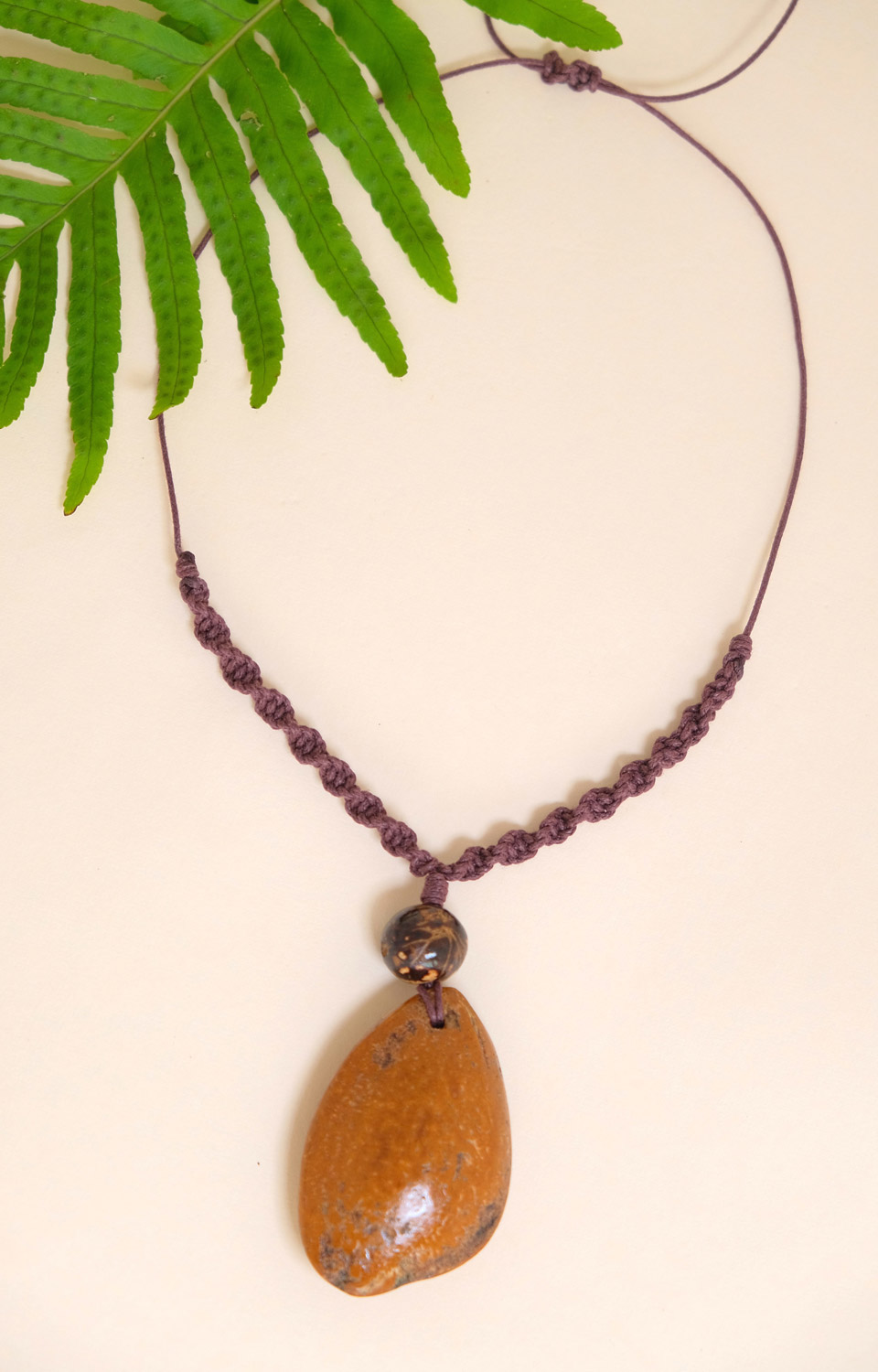
Baru
The Baru, or “Cumbaru,” is the fruit of the majestic baruzeiro, a tree native to the Brazilian Cerrado that can grow over 20 metres tall. With its dense canopy and sturdy trunk, this tree not only beautifies the landscape but also offers an exceptional fruit.
Inside its tough shell lies a nut with a delicious flavour, similar to peanut, and an outstanding nutritional profile. The fruit pulp is also a vital food source for wild animals and livestock, especially during drought periods.
Besides its fruit, the baruzeiro is valued for its high-quality wood, ideal for carpentry and furniture. Baru seeds, with their unique character, are transformed into eco-jewellery pieces that combine beauty and sustainability, connecting you with the richness of the Cerrado.
Traces of resistance: the power of the Baru seed
The Baru seed in the life of the Kayapó Indigenous Ethnic Group of the Amazon can be compared to a tenacious tree sprouting amidst concrete, rising with determination despite all adversities. Like that tree, the Kayapó find in the Baru a powerful symbol of strength and perseverance in the face of external pressures.
Just as the seed takes root and thrives in arid soils, the Kayapó not only use the Baru as food but also as a symbol of their ability to flourish amid challenges, embodying the power of resilience and autonomy deeply rooted in their land and ancestral traditions.



Paxiúba
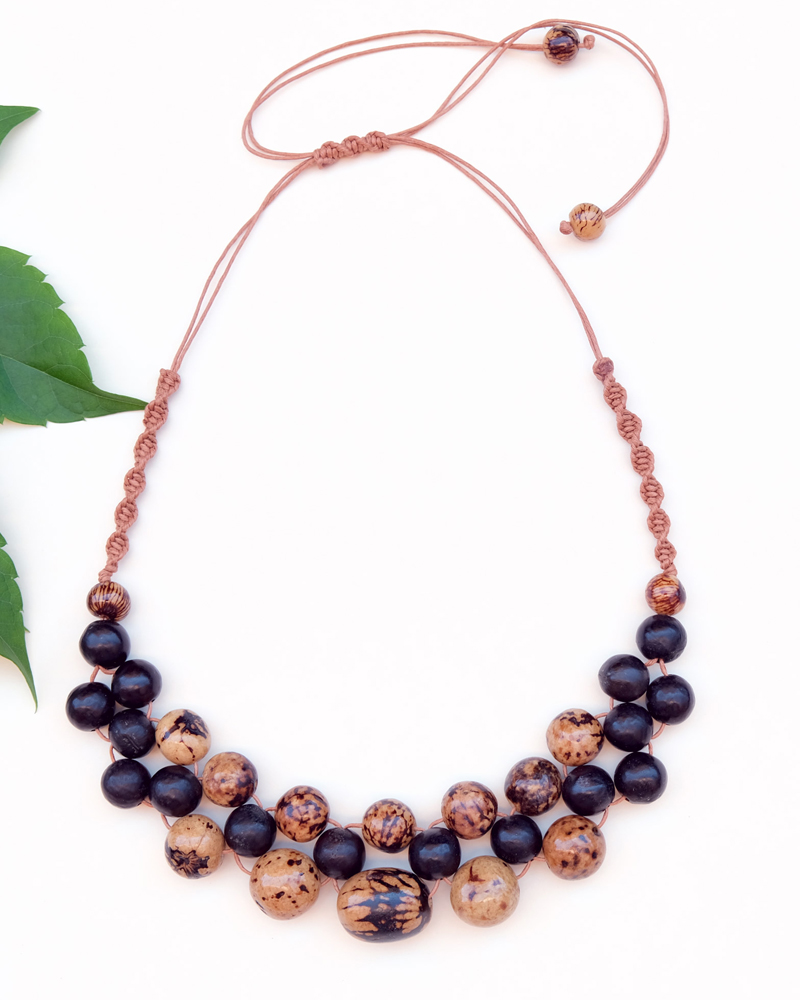
The Paxiúba is a majestic palm from the Arecaceae family, essential to the tropical ecosystems of South America, especially in Brazil. Growing up to 25 metres tall, it stands out for its aerial roots, which help it thrive in flooded soils, and for its role in forest regeneration by providing food and shelter to numerous species. Common near rivers and swamps, it is also key to biodiversity, supporting birds and mammals.
This palm holds deep cultural significance. Indigenous communities use Paxiúba’s strength to build traditional homes and its fibre to craft baskets, hats, and textiles. Additionally, its fruits are a valuable food source.
However, this species faces threats from deforestation and agricultural expansion. Its conservation is vital not only to protect the biodiversity of tropical forests but also to preserve ancestral traditions that have coexisted with these palms for generations. Paxiúba is a symbol of the rich connection between nature and culture.
Paxiúba: seed of prosperity in the Amazon
For the Indigenous communities of the Amazon, the Paxiúba seed represents a symbol of good fortune and prosperity, attracting positive energies and favorable opportunities into their lives. Wearing or using these seeds is seen as a way to invoke the blessing of the forest guardians, thus strengthening the spiritual connection and fostering a harmonious balance between humans and nature.
This deeply rooted belief in the magic and spirituality of the Paxiúba reflects the holistic and interdependent worldview upheld by Indigenous peoples, highlighting how plants remain essential allies in the pursuit of wellbeing and prosperity—even in a modern world that often distances people from nature.



FOLLOW US
@badara.ecojoyas




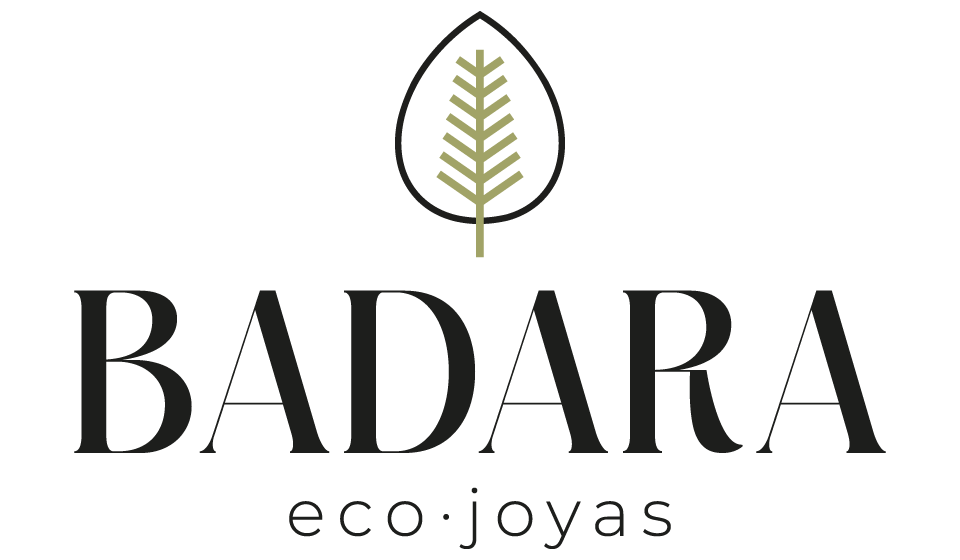
hola@badara.es
+34 643 046 581
Plaza de España, 1
Ullà (Girona)
Follow us
@badara.ecojoyas
Don’t forget to take
a photo tagging us.